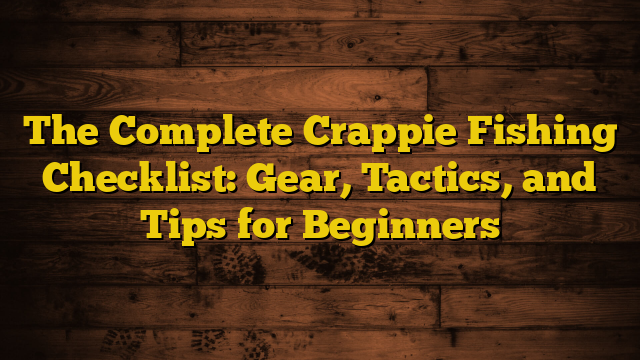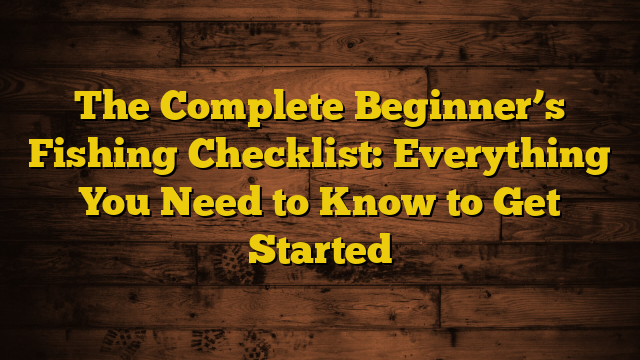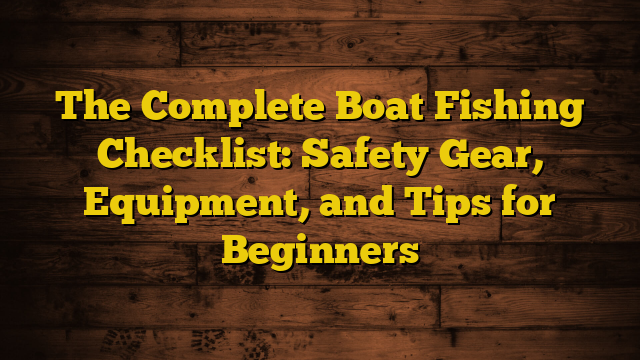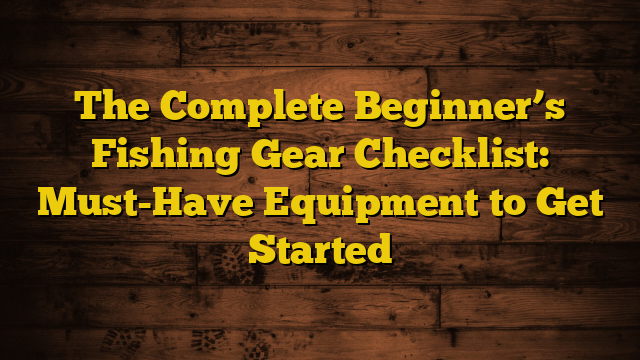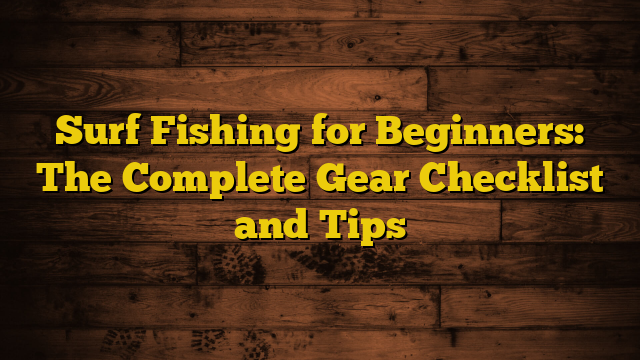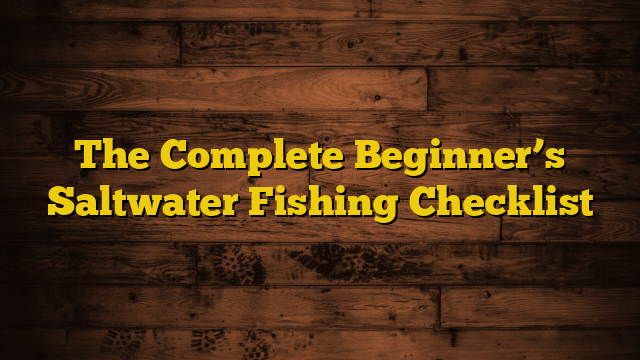Ready to start catching delicious crappie? This detailed crappie fishing checklist will provide everything needed, from rods and jigs to techniques and rigs, to help beginners hook black crappie, white crappie, and more.
Few panfish are as widely loved to catch for the table as crappie, thanks to their sweet white fillets and willingness to bite year-round. But successfully catching slab crappie does require some specialized tackle and approaches compared to other species.
Use this comprehensive guide to prepare for productive days on the water targeting these fun-fighting fish. We’ll cover crappie behavior, seasonal patterns, go-to baits, productive locations, rigging methods, and retrieval techniques to prime first-timers for success. Follow this checklist closely and filling your stringer with slab crappie becomes much closer to reality.
Rod and Reel Recommendations for Crappie
Sensitive yet durable crappie rods and reels allow detecting light bites and setting the hook before they spit the bait. Ideal beginner setups include:
- 5-7’ ultralight or light action rod – Detects subtle bites yet handles hauling in several fish
- Light spinning reel with smooth drag – Handles long fights with feisty fish
- 2-8 lb. test monofilament line – Light enough for bites but robust for many fish
- Budget rod/reel combos under $50 – Deliver value without breaking the bank
With the right crappie pole combo, you’ll have a blast fighting these hard-charging panfish all day without wearing out your arms.
Must-Have Crappie Fishing Terminal Tackle
Terminal tackle like small jig heads, lightweight lines, and tiny hooks allow imitating prey crappie target. Must-have terminal tackle includes:
- 1/32 – 1/8 oz. lead jig heads – Match weight to depth and current
- #4 aberdeen hooks – Small hooks match the size of crappie baits
- 2-4 lb. test leaders – Nearly invisible line helps get finicky crappie to bite
- Micro swivels and split rings – Attach baits while allowing 360 degree movement
- Floats, bobbers, corks – Indicators help detect light bites
- Tiny split shots or nail weights – Add weight to baits for casting distance
Carry a variety of components to adapt and finesse pressured crappie in clear water conditions.
Effective Crappie Baits and Attractors
Matching the bait to mimic naturally available food is key to triggering crappie strikes. Must-have baits include:
- Jigs paired with 2” twister or curl tail soft plastics – Try black, white, chartreuse
- Small 1-1.5” swimming minnow lures – Crankbaits that imitate shad/minnows
- Tiny marabou or bucktail jigs – White, yellow, or black feathers
- Small 1” curly tail grubs on 1/16 oz jig heads – Easy tweak to tip jigs
- Live bait like small minnows or bits of nightcrawler – National crappie candy!
- Scents and attractor gels – Garlic, shad, and anise flavors that crappie covet
Keep bodies compact like smaller baitfish. Try different colors and retrieves until you dial in a proven pattern.
Helpful Crappie Fishing Tools and Accessories
Specialized crappie gear helps anglers handle fish delicately, manage micro tackle, and increase efficiency on the water:
- Ultra-fine fishing nets – Scoop up panfish without harming them
- Tackle organization tools – Tiny tackle requires neat storage!
- Small needle-nose pliers or hook removers – Remove hooks safely
- Creel bags or bucket – Lets you transport catch without damage
- Rod holders – Hands-free fishing with multiple poles
- Depth finder/fish finder – Mark schools of crappie suspended in open water
- Line conditioner – Prevent line memory and tangled reels
- Microfiber cloth – Keep eyeglasses and camera lenses crystal clear
- Lip balm and sunscreen – Prevent chapped lips and sunburn
Come prepared with crappie tools for increased convenience when juggling multiple rods and fish.
Locating Crappie Hot Spots
To find clusters of feeding crappie, focus on locations like:
- Schools suspended over open water – Often relate to contours or structure below
- Coves with woody cover like brush piles – Year-round crappie magnets
- Docks, piers, and marinas – Check depths for suspended fish
- Inlets and creek channels – Transition zones rich in nutrients and bait
- Vegetation edges like emergent grass – Ambush prey and provide shade
- Standing timber and laydowns – Look for crappie stacked at different depths
- Rock humps, ledges, and breaklines – Hard structure attracts and congregates baitfish
Use electronics and seasonal patterns to identify the most promising spots.
Useful Crappie Fishing Resources for Beginners
Learning from veteran crappie anglers through videos, magazines, and tackle shops will prime you for success. Helpful crappie fishing resources include:
- Local fishing clubs – Connect with avid crappie anglers in your region
- Guided trips – Let the pros do the work while you observe and ask questions
- YouTube channels – Jig tying, fish finding, trolling motor use, and more
- Books like “Crappie Fundamentals” – Advanced tips and tactics for slab crappie
- Magazines like Crappie Angler – Gear reviews, hot lakes, and how-to’s
- Facebook groups – Get real-time bite updates and advice from locals
- Tackle shop staff – Ask questions and get regional tips from the experts
Tap this wealth of crappie knowledge to avoid the painful trial-and-error learning curve. Finding slabs gets much easier.
Get Started Reeling in Slab Crappie
This complete crappie fishing checklist prepared you to start catching crappie in your local waters. Follow it closely and ice chests full of white fillets will become a reality this season.
Be patient while honing techniques like reading electronics, vertical jigging, finding suspended fish, and setting the hook on light bites. Crappie skills improve through hands-on experience.
Soon enough you’ll have the know-how to pay forward expertise by coaching other newcomers to crappie fishing. That friendly guidance perpetuates the sport we all love.
Don’t wait until next season wishing you put more slabs in the boat this year! Use this detailed guide and make memories catching the crappie of a lifetime in 2023.

